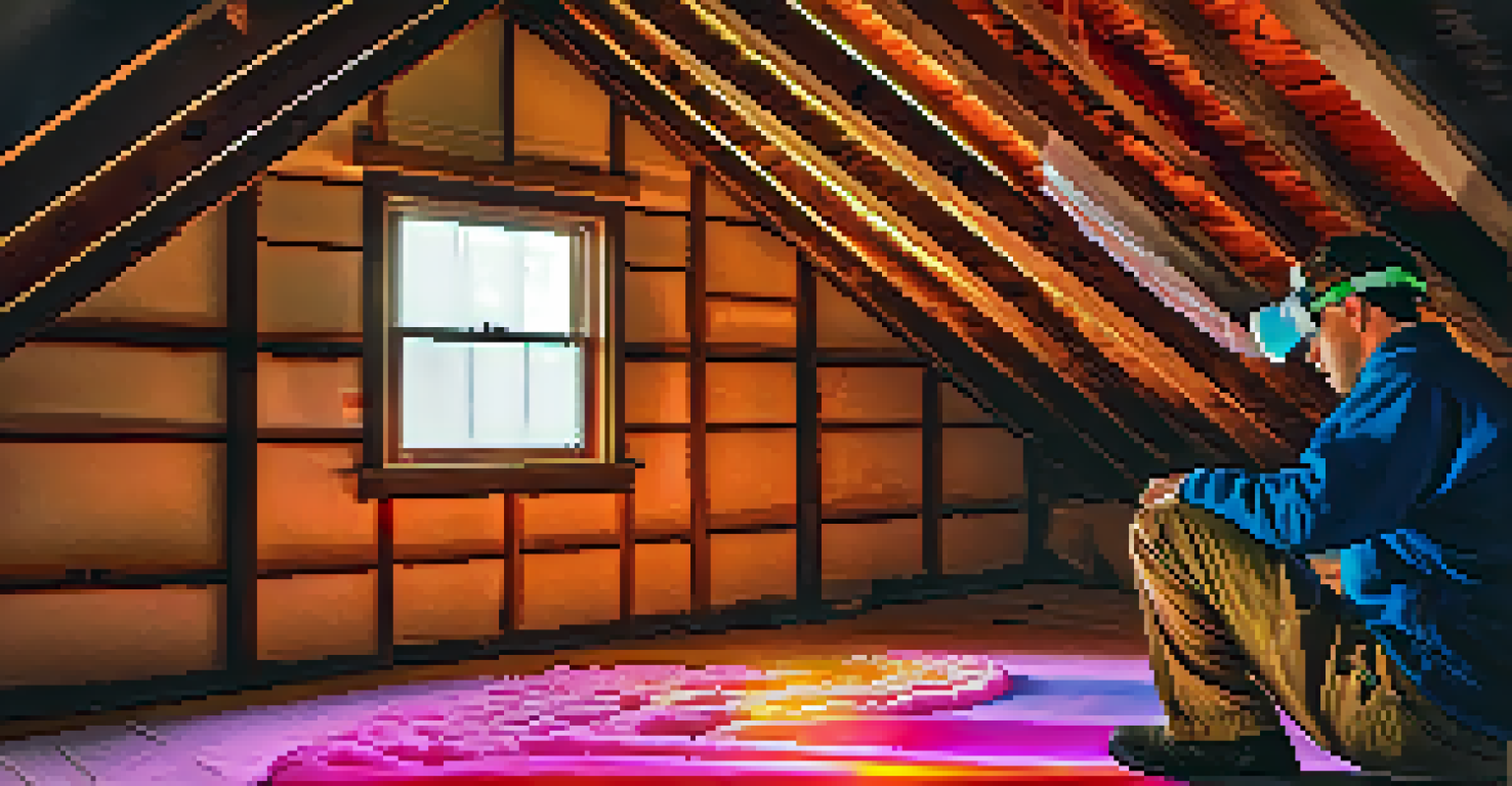Exploring the Use of Thermal Imaging in Energy Audits

Understanding Thermal Imaging Technology and Its Benefits
Thermal imaging technology uses infrared cameras to detect temperature variations in buildings. This non-invasive approach allows us to visualize energy loss through walls, roofs, and windows. By identifying these hot and cold spots, we can pinpoint areas needing improvement, making it a crucial tool in energy audits.
Energy efficiency is not just a cost-saving measure; it's a way to improve the overall quality of our lives and the environment.
The benefits of thermal imaging extend beyond just identifying leaks. It helps in evaluating insulation effectiveness, detecting moisture issues, and even locating electrical hotspots that could pose fire risks. This comprehensive analysis makes it easier to prioritize energy efficiency upgrades, saving both time and money.
Additionally, thermal imaging can be a great communication tool. Visual evidence of energy loss can help homeowners and businesses understand the importance of recommended improvements, boosting their motivation to invest in energy efficiency solutions.
How Thermal Imaging Enhances Energy Auditing Processes
In energy audits, thermal imaging streamlines the process by providing instant visual feedback. Rather than relying solely on manual inspections, infrared cameras offer a more efficient way to assess a building's energy performance. This immediate data helps auditors make quicker, informed decisions during their evaluations.

Moreover, thermal imaging allows for a more thorough inspection compared to traditional methods. Auditors can examine hard-to-reach areas and get a clearer picture of a building's energy efficiency without extensive disruption. This means less downtime for businesses and homeowners during the audit process.
Thermal Imaging Identifies Energy Loss
This technology visualizes temperature variations in buildings, helping to locate areas needing energy efficiency improvements.
The integration of thermal imaging into energy audits can also lead to more accurate reporting. By providing detailed thermal images along with numerical data, auditors can create compelling reports that illustrate energy performance clearly, making it easier for clients to understand their options.
Common Applications of Thermal Imaging in Energy Audits
Thermal imaging is widely used to identify air leaks in buildings, a common culprit behind energy loss. By capturing thermal images, auditors can visually pinpoint drafts around windows, doors, and other openings. This allows for targeted repairs that can significantly reduce energy bills.
The greatest threat to our planet is the belief that someone else will save it.
Another key application is assessing insulation effectiveness. Infrared cameras can reveal areas where insulation is lacking or improperly installed, highlighting where improvements are necessary. This ensures that homes and buildings are not just energy-efficient but also comfortable year-round.
Additionally, thermal imaging can help identify issues with HVAC systems. By detecting temperature irregularities in ductwork or around vents, auditors can determine if a system is functioning optimally. Addressing these problems can enhance overall comfort while reducing energy consumption.
The Role of Thermal Imaging in Commercial Energy Audits
In commercial settings, thermal imaging plays a vital role in energy audits due to the scale and complexity of the buildings. These structures often have intricate HVAC systems, extensive ductwork, and multiple layers of insulation, making manual inspections more challenging. Thermal imaging facilitates a comprehensive analysis that ensures no area is overlooked.
Furthermore, commercial buildings are often subject to stringent energy regulations. Using thermal imaging not only helps in meeting these standards but also showcases a commitment to sustainability. This can enhance a company's reputation while potentially qualifying for tax incentives or rebates.
Streamlined Energy Auditing Process
Thermal imaging enhances energy audits by providing instant visual feedback, allowing for quicker and more thorough assessments.
The ability to quickly identify energy inefficiencies can also lead to significant cost savings for businesses. By addressing issues revealed through thermal imaging, companies can lower operational costs, reinvesting those savings back into their operations or sustainability initiatives.
Benefits of Using Thermal Imaging for Homeowners
For homeowners, the investment in thermal imaging during an energy audit can yield substantial long-term savings. Identifying and rectifying energy leaks not only reduces monthly bills but also enhances the overall comfort of the home. This means fewer cold drafts in winter and a more stable indoor temperature during summer.
Additionally, thermal imaging can uncover hidden problems that may not be visible to the naked eye, such as moisture build-up behind walls. By addressing these issues early, homeowners can prevent more significant problems down the line, such as mold growth or structural damage, which can be costly to repair.
Finally, the visual data from thermal imaging provides a clear roadmap for homeowners. With precise information about where to invest in upgrades, they can prioritize projects that will yield the most significant energy savings and comfort improvements.
The Future of Thermal Imaging in Energy Audits
As technology advances, the future of thermal imaging in energy audits looks promising. Innovations in infrared camera technology are making these devices more accessible and affordable for both homeowners and professionals. This increased availability could lead to a wider adoption of thermal imaging as a standard practice in energy audits.
Moreover, integrating thermal imaging with artificial intelligence (AI) and data analytics could revolutionize the way audits are conducted. AI-powered tools can analyze thermal images to provide real-time recommendations, enhancing the accuracy and efficiency of energy audits.
Long-Term Savings for Homeowners
Investing in thermal imaging during energy audits can lead to significant savings by identifying and addressing energy leaks.
Finally, as awareness of climate change grows, the demand for energy-efficient solutions is likely to rise. Thermal imaging will play a crucial role in helping individuals and businesses achieve their energy-saving goals, ultimately contributing to a more sustainable future for all.
Choosing the Right Thermal Imaging Service for Your Needs
When selecting a thermal imaging service for energy audits, it's essential to look for experienced professionals. A reputable auditor should be certified and have a solid understanding of both thermal imaging technology and energy efficiency principles. This expertise ensures accurate assessments and effective recommendations.
Another factor to consider is the quality of the equipment used. High-resolution thermal cameras provide clearer images and more precise data, leading to better insights during the audit. It's worth asking potential service providers about the technology they use to ensure you're getting the best possible analysis.

Lastly, customer reviews and testimonials can provide valuable insight into a service provider's reliability and effectiveness. Hearing from previous clients can help you gauge the quality of service you can expect, ultimately leading to a more informed decision.